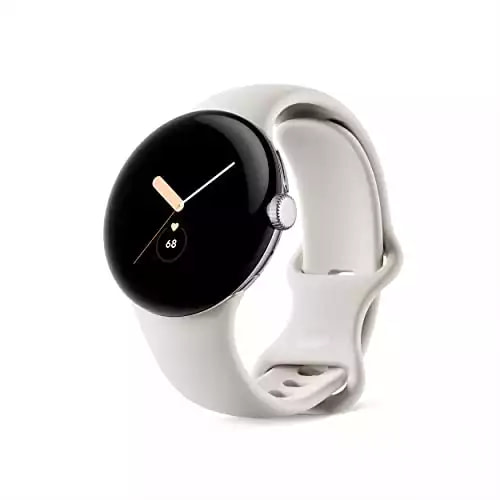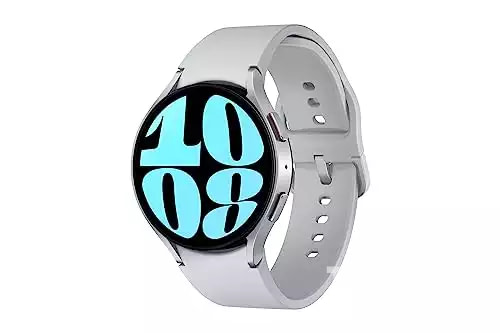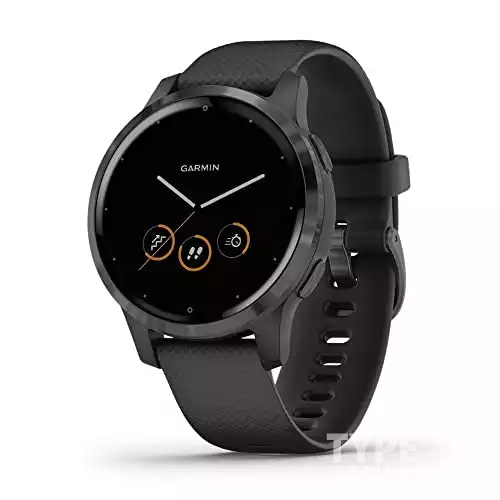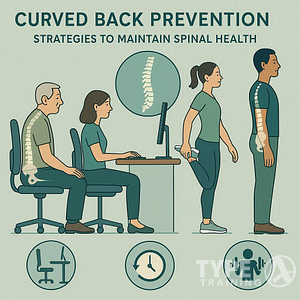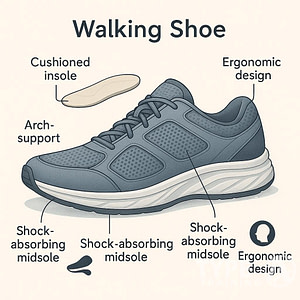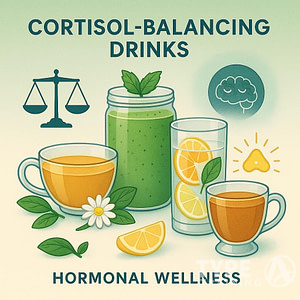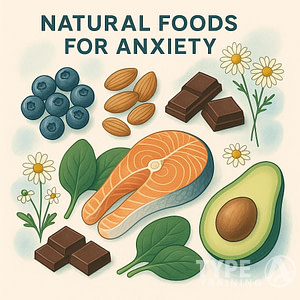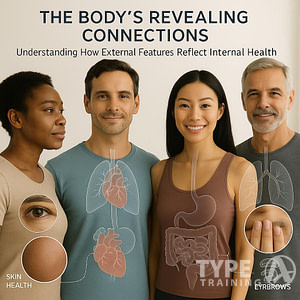Understanding what constitutes a dangerous heart rate is crucial for maintaining cardiovascular health.
Your heart rate, the number of times your heart beats per minute, can vary based on numerous factors, including activity level and overall health.
In adults, a typical resting heart rate ranges from 60 to 100 beats per minute, and while it may fluctuate, it’s important to know when these numbers might signal a health concern.
A heart rate persistently above or below the normal range may require medical attention, as it can be indicative of underlying health issues.
Popular posts:
Related: Top Heart Rate Monitors: Chest Strap, Armband, Watch in 2024
Related: Top Fitness Watches 2024: Stay Active with Our Guide
Knowing when a heart rate is considered dangerous depends on several variables such as age, fitness level, and whether one is at rest or performing physical activities.
For example, a heart rate above 100 bpm at rest might be dangerous, as could be a heart rate too far below the lower threshold of 60 bpm.
Learning to monitor your heart rate and understanding the factors that affect it can empower you to take the necessary steps toward safeguarding your heart health, from seeking medical advice to adjusting your lifestyle habits.
Key Takeaways
- Resting heart rates between 60 and 100 bpm are typical, but persistent deviation may indicate health issues.
- Several factors, including age, activity, and underlying conditions, influence what is considered a dangerous heart rate.
- Regular monitoring and understanding heart rate fluctuations contribute to effective heart health management.
Understanding Heart Rate
Heart rate refers to the number of times your heart beats per minute (bpm). It’s an indicator of your heart’s health and overall bodily function.
Your normal heart rate can vary based on several factors, including age and activity level.
When you’re at rest, your resting heart rate generally falls between 60 and 100 bpm. It’s measured when you’re still and calm.
Athletes and physically active individuals may have a resting heart rate lower than 60 bpm, indicating a well-conditioned heart.
Conversely, your maximum heart rate is the highest rate your heart should safely reach, typically during vigorous exercise.
To estimate your maximum heart rate, you can subtract your age from 220. So, if you’re 30 years old, your estimated maximum heart rate is 190 bpm.
While exercising, you may aim for a target heart rate to ensure you’re working out within a safe and effective zone.
This is often represented as a percentage of your maximum heart rate.
For moderate-intensity exercise, your target heart rate should be about 50% to 70% of your maximum, while vigorous exercise intensity should be about 70% to 85%.
- Typical Adult Resting Heart Rate: 60-100 bpm
- Well-Trained Athlete Resting Heart Rate: Below 60 bpm
- Maximum Heart Rate: 220 – (Your Age) bpm
- Target Heart Rate (Moderate Intensity): 50% – 70% of Max
- Target Heart Rate (Vigorous Intensity): 70% – 85% of Max
It’s important to remember that what is a usual heart rate for you may not be the same for someone else, and that’s perfectly normal.
If you ever notice your resting heart rate is consistently above 100 bpm or well below 60 bpm, it’s a good idea to consult medical professionals.
Factors Affecting Heart Rate
Your heart rate is influenced by several factors, each playing a role in how fast or slow your heart beats.
Age: Generally, as you age, your maximum heart rate decreases. Younger people often have higher heart rates compared to older individuals.
Exercise: Engaging in physical activity elevates your heart rate. The more intense the exercise, the higher your heart rate will be. Regular fitness activities can lead to a lower resting heart rate over time.
Sleep: Quality and quantity of sleep can affect your heart rate. Both too much and too little sleep can lead to an elevated heart rate during waking hours.
Stress: High stress levels may cause your heart rate to increase due to the release of stress hormones.
| Substance | Effect on Heart Rate |
|---|---|
| Caffeine | Can temporarily increase heart rate. |
| Alcohol | Can cause heart rate to either increase or decrease, affecting rhythm too. |
Temperature: Extremes in temperature, hot or cold, can cause your heart to work harder, potentially increasing your heart rate.
Body Composition: Both weight and overall body composition impact heart rate. Higher body weight can result in a higher heart rate.
Smoking: Nicotine in cigarettes elevates heart rate, and long-term smoking can lead to chronic heart rate increases.
Be aware of these factors when considering your heart rate, especially if it consistently falls outside the normal range of 60-100 beats per minute at rest. A significantly lower or higher heart rate can be a sign to consult with a healthcare professional.
When Is a Heart Rate Considered Dangerous
A heart rate outside the normal resting range of 60-100 beats per minute could signal a potentially dangerous condition. It’s important to recognize when high or low heart rates may require medical attention.
High Heart Rates
Tachycardia refers to a heart rate that’s too fast—typically more than 100 beats per minute when at rest. Several types of tachycardia exist, including:
- Sinus Tachycardia: a natural increase in heart rate, such as during exercise or stress.
- Supraventricular Tachycardia (SVT): an abnormally fast heartbeat originating above the heart’s ventricles.
- Ventricular Tachycardia: a rapid heart rate that starts with abnormal electrical signals in the ventricles.
Symptoms associated with high heart rates include:
- Palpitations: feeling like the heart is racing or fluttering.
- Chest pain
- Shortness of breath
- Dizziness or lightheadedness
- Fainting (syncope)
If you experience a high heart rate coupled with these symptoms, it’s critical to seek medical attention as it may indicate conditions like atrial fibrillation, which can lead to a heart attack or other complications.
Low Heart Rates
Bradycardia is identified by a heart rate that is too slow—generally fewer than 60 beats per minute when at rest. It might be normal for some individuals, particularly fit ones, but in others, it can be a sign of issues like:
- Heart block: an impediment to the heart’s electrical pathways.
- Sick sinus syndrome: erratic heart rate due to a malfunctioning sinus node.
Symptoms of low heart rates include:
- Fatigue
- Dizziness or lightheadedness
- Fainting or near-fainting spells
- Confusion
Seeking medical attention is important if you exhibit these symptoms along with a low heart rate, as they might suggest the heart isn’t pumping enough blood and could escalate to severe complications, including heart failure.
Medical Conditions Related to Abnormal Heart Rates
Your heart rate can tell a lot about your overall health. Abnormal heart rates, whether too high or too low, might be a signal of underlying health issues that require medical attention.
Heart-Related Conditions
- Arrhythmias: Arrhythmia is a condition where your heartbeat is irregular, either too fast or too slow. Examples include atrial fibrillation, which leads to a rapid, irregular heart rate, and bradycardia, characterized by unusually slow beats. Both conditions may be signs of other heart issues like congenital heart disease or heart failure.
- Heart Disease: The presence of cardiovascular disease often increases the risk of arrhythmias or heart palpitations. Likewise, conditions such as heart muscle damage from a previous heart attack can disrupt your heart rhythm.
Other Health Issues
- Endocrine Disorders: Imbalances in hormone levels, such as those seen with hyperthyroidism or hypothyroidism, can lead to an abnormal heart rate. With hyperthyroidism, your heart may experience a rapid and forceful heartbeat, while hypothyroidism can lead to a slower heart rate.
- Additional Conditions Affecting the Heart Rate:
- Anemia: A lower-than-normal red blood cell count can cause palpitations and tachycardia.
- Infection or Fever: Your heart rate may increase as your body tries to fight off illness.
- Anxiety: Stress and anxiety can cause heart palpitations or a feeling of fluttering in the chest.
- Other Factors: Dehydration, obesity, and diabetes can all lead to changes in heart rate and rhythm.
Monitoring and Treating Dangerous Heart Rates
If you suspect your heart rate is dangerously high or low, immediate monitoring is vital.
A standard method is checking your pulse at rest.
An electrocardiogram (EKG) is a more detailed examination that measures the electrical impulses of your heart and can identify irregularities.
In the case of a suspected medical emergency, such as a heart rate that’s too fast or slow, you must seek treatment at a hospital promptly.
Your healthcare provider will also measure your oxygen saturation and blood pressure during your visit. These can give further insight into your cardiovascular health.
For treatment, various medicines like beta-blockers and calcium channel blockers may be prescribed. These medications help to manage your heart’s rhythm and rate.
In some cases, your healthcare provider may also recommend an intervention like a pacemaker to correct the rhythm of your heart by supplying steady electrical impulses.
Remember to:
- Regularly measure your heart rate
- Pay attention to EKG readings
- Be aware of the emergency signs that warrant immediate medical attention
- Discuss treatment options with your healthcare provider
How to Check Your Own Heart Rate
Knowing your heart rate can be a crucial aspect of monitoring your cardiovascular health.
To measure it manually, you’ll need to find your pulse, which can be felt most strongly at two points: the radial artery in your wrist and the carotid artery in your neck.
- Radial Pulse
- To locate your radial pulse, turn your wrist palm up and place your index and middle fingers on the opposite wrist, slightly below the base of your thumb.
- Press lightly until you feel your pulse.
- Carotid Pulse
- Find your carotid pulse by gently placing your index and middle fingertips on your neck, to one side of your windpipe.
- Apply slight pressure to feel the pulse.
Once you’ve found your pulse:
- Count the beats you feel for 15 seconds.
- Multiply that number by 4 to calculate your beats per minute (bpm).
For a more effortless and perhaps more accurate measurement, you can use devices such as wrist-worn heart rate monitors or chest straps.
These gadgets often provide real-time heart rate data and can be particularly useful during exercise, giving you the ability to stay within your target heart rate zones.
- Wrist-based devices: Watches with heart rate sensors can offer the convenience of measuring your pulse throughout the day without any manual effort.
- Chest straps: Known for their accuracy, these are worn around your chest and detect electrical signals from your heart, similar to an EKG.
Related: Top Heart Rate Monitors: Chest Strap, Armband, Watch in 2024
Related: Top Fitness Watches 2024: Stay Active with Our Guide
|
3.5
|
3.5
|
3.5
|
3.5
|
|
N/A
|
$309.99
|
$299.99
|
$302.00
|
What You Can Do for Your Heart Rate (HR Health Tips)
Maintaining a healthy heart rate is crucial to overall cardiovascular health. Here are some practical steps you can take:
- Monitor Your Heart Rate: Learn to check your pulse either manually or with a device. Aim to regularly measure your resting heart rate to stay informed about your baseline.
- Stay Hydrated: Drinking water assists in maintaining a healthy heart rate by keeping your blood volume at an optimal level, facilitating easier circulation.
- Adopt Breathing Techniques: Deep breathing and relaxation can help in lowering your heart rate. Utilize techniques such as breathing exercises to stay calm and manage your heart rate effectively.
- Be Active: Engage in regular physical activity. Exercise strengthens the heart muscle and improves its efficiency, potentially lowering your resting heart rate over time.
- Healthy Eating: Opt for a balanced diet with plenty of fruits, vegetables, and whole grains to support a healthy heart rate. Incorporate heart-healthy diet choices to your daily routine.
- Stress Management: Stress can cause your heart rate to rise. Find stress reduction methods that work for you, like meditation, yoga, or other relaxation practices.
- Limit Stimulants: Reduce intake of caffeine and alcohol as these can elevate your heart rate. Be mindful of medications and substances that could have a similar stimulatory effect.
- Quit Smoking: Smoking can increase your heart rate, so quitting smoking is essential for reducing this risk.
- Sleep Well: Ensure you get enough quality sleep regularly as poor sleep can affect your heart rate.
- Consult Healthcare Providers: Especially for those on medications like beta-blockers or with conditions like PoTS, discussing heart rate targets with a healthcare provider is vital.
Frequently Asked Questions
Understanding when a heart rate is considered dangerous is crucial to maintaining cardiovascular health. This section answers your most pressing questions on dangerous heart rates.
At what heart rate should an adult seek medical attention?
If your resting heart rate is consistently above 100 beats per minute (bpm) or below 60 bpm, and you experience symptoms like dizziness, faintness, or shortness of breath, you should seek medical attention. In some cases, a heart rate over 120 while resting may indicate an abnormal heart rhythm, which warrants a healthcare provider’s evaluation.
What are the risks of a high heart rate?
A high heart rate, particularly if sustained and not caused by short-term stressors such as exercise, may signal heart-related issues such as atrial fibrillation or other arrhythmias. Increased risk of stroke, heart attack, and other cardiovascular diseases are linked with chronically elevated heart rates.
Can a low heart rate be dangerous for men and women?
While a heart rate below 60 bpm, known as bradycardia, can be normal for individuals with high fitness levels or when asleep, it can be dangerous if the heart is not pumping enough blood to meet the body’s needs. Symptoms to watch for include fatigue, weakness, or fainting.
What symptoms are associated with dangerously high or low heart rates?
Symptoms of dangerously high heart rates include chest pain, shortness of breath, light-headedness, or rapid pulse. Similarly, dangerously low heart rates may cause fatigue, dizziness, or fainting spells. In either case, these symptoms necessitate prompt medical evaluation.
How does age affect the threshold for dangerous heart rates?
Although a normal resting heart rate ranges from 60 to 100 bpm for most adults, younger individuals can typically handle higher heart rates better than older adults due to the heart’s natural aging and potential for underlying health conditions. Regularly elevated resting heart rates in older adults can be more concerning.
What constitutes a medical emergency in terms of heart rate?
A medical emergency may occur when a heart rate is rapid (tachycardia) or slow (bradycardia).
It is accompanied by severe symptoms such as chest pain, fainting, confusion, or difficulty breathing. Immediate medical attention is required, and such a condition often signifies a significant heart-related emergency.







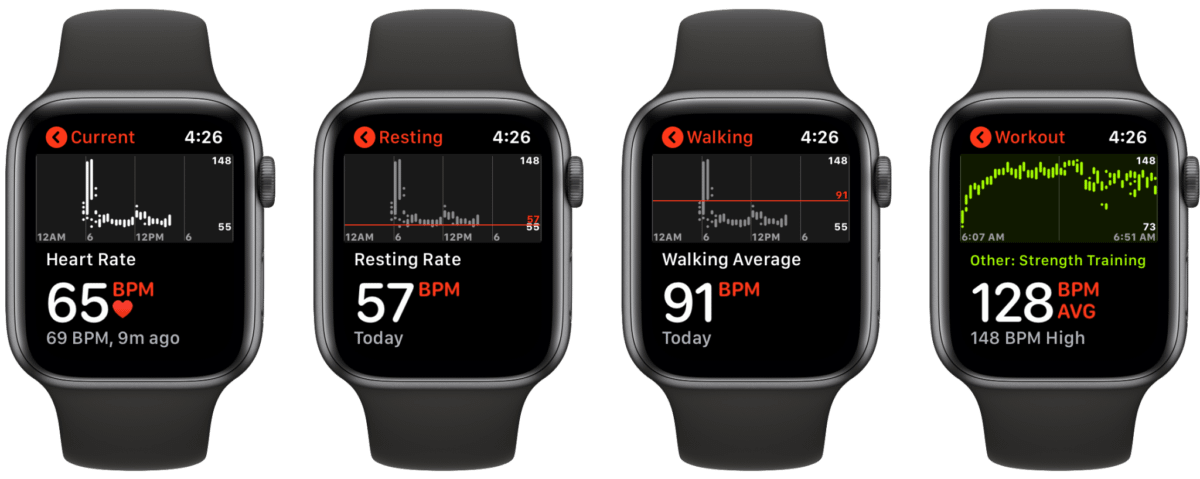
![Apple Watch Series 9 [GPS 41mm] Smartwatch](https://mlrsaszawtm3.i.optimole.com/cb:4PHY.45cbb/w:auto/h:auto/q:90/f:best/ig:avif/https://www.typeatraining.com/wp-content/uploads/2023/10/31xWycYXNmL._SL500_.webp)
